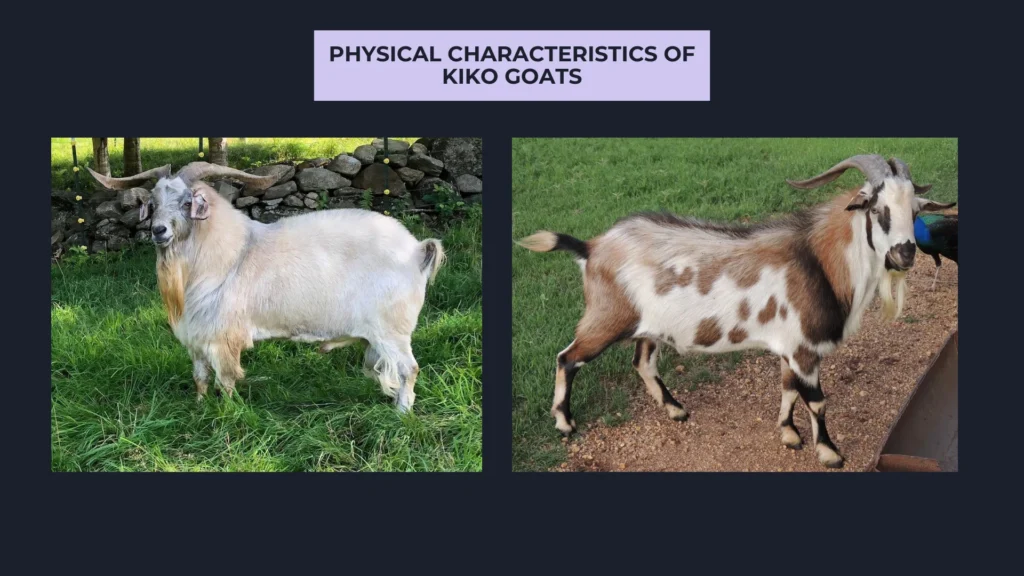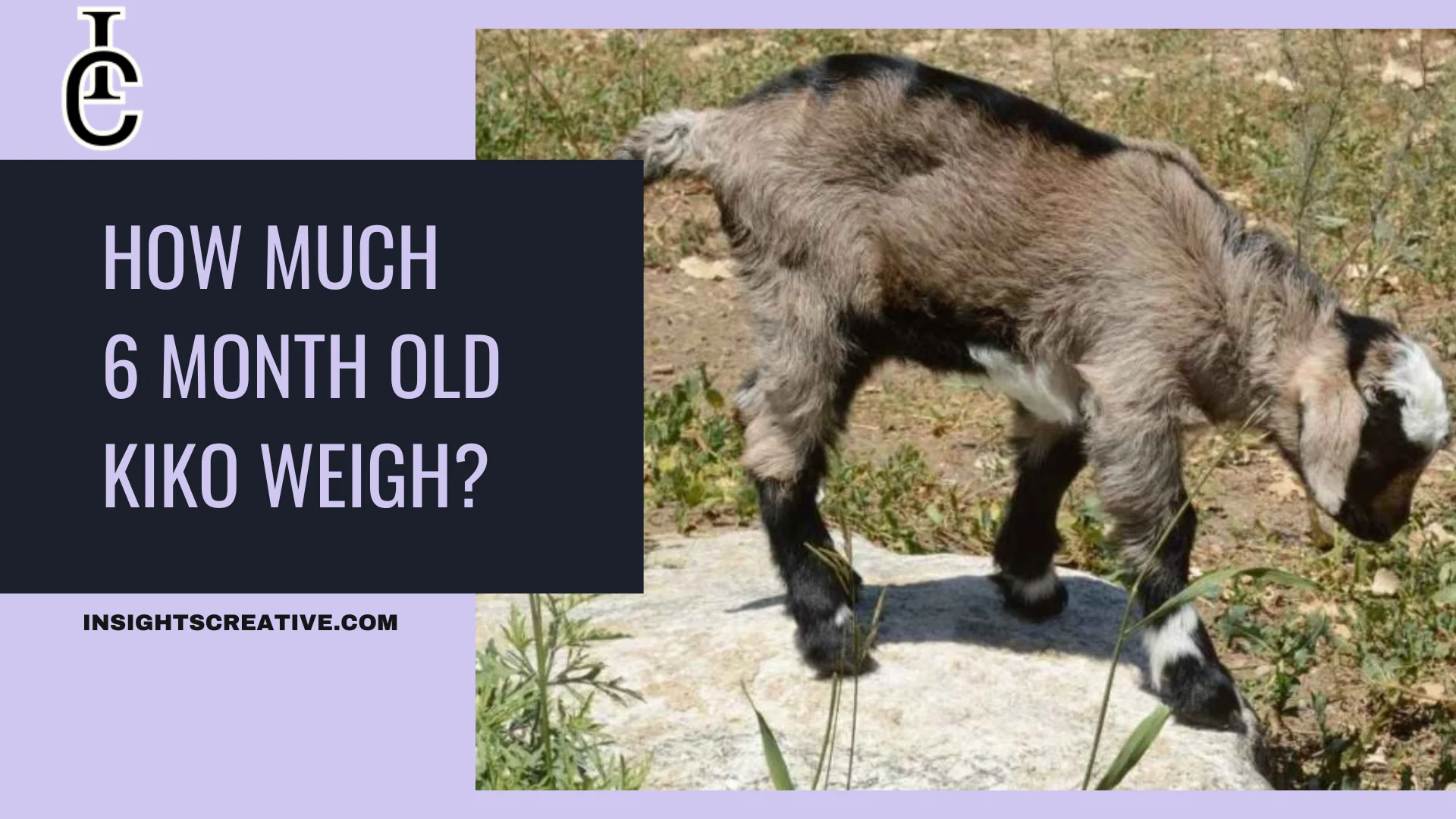Kiko goats are renowned for their resilience, rapid growth, and suitability for meat production. As breeders and farmers invest in raising these goats, a common question arises: “How many pounds should a 6 month old Kiko weigh?” Understanding the weight expectations for a 6-month-old Kiko goat is crucial for effective herd management, health monitoring, and optimizing meat production. The weight can vary depending on factors like genetics, diet, and environmental conditions, making it important to consider all variables for accurate weight management.
Overview of the Kiko Goat
The Kiko goat, originating from New Zealand, has gained popularity among farmers for its low-maintenance nature and ability to thrive in various climates. Its name “Kiko,” meaning meat or flesh in Maori, hints at its primary use in meat production. Kiko goats are known for their efficiency in converting forage into body mass, making them an ideal choice for farmers looking to optimize their meat yield.
Physical Characteristics of Kiko Goats
Kiko goats are medium to large-sized animals with a sturdy build, making them well-suited for various farming environments. Bucks can weigh significantly more than does, with adult males reaching weights of 200-300 pounds. Their muscular structure contributes to their ability to gain weight quickly, even in less-than-ideal conditions. Kiko goats typically have a range of coat colors, from white to brown and black, which can be an adaptation to different climates. The breed’s hardiness is one of the reasons for their popularity among meat goat farmers.

Growth and Development in Kiko Goats
From birth to maturity, Kiko goats exhibit notable growth rates. At birth, Kiko kids generally weigh between 7-9 pounds. By the time they reach 3-4 months, they can weigh anywhere from 40 to 60 pounds, depending on the quality of their diet and overall health management. By 6 months, the weight of a Kiko goat can be significantly influenced by several factors including diet and genetics, which play a pivotal role in achieving the desired growth benchmarks.
Factors Influencing the Weight of a 6-Month-Old Kiko Goat
Achieving optimal growth in Kiko goats involves understanding the various factors that influence weight gain. To know how much a 6 month old Kiko weigh, it’s important to consider genetics, diet, environmental conditions, and parasite management.
Genetics and Breeding Impact
The genetic makeup of a Kiko goat has a direct impact on its growth rate and ultimate weight at different stages. Selective breeding practices focusing on size, resilience, and growth rate can lead to offspring that are more robust and capable of faster weight gain. For instance, crossbreeding Kiko goats with other meat breeds like Boer goats can yield hybrids that benefit from the strengths of both breeds. This practice can result in heavier 6-month-old kids that are well-suited for meat production.
Role of Nutrition in Growth
Nutrition is a critical factor in determining the weight of Kiko goats, especially during their first 6 months. While Kiko goats are known for their ability to thrive on low-quality forage, providing a balanced diet rich in proteins and minerals can significantly boost their growth rate. Access to high-quality pasture, hay, and supplemental grains can make the difference between an average growth rate and a thriving, healthy goat that reaches the upper weight range. Baby goat weight can vary greatly with diet, making it important to monitor their nutrition closely.
Climate and Environmental Conditions
The adaptability of Kiko goats to various climates is one of their key strengths. However, extreme weather conditions can influence their growth. In hotter climates, Kiko goats may experience reduced appetite, which can slow down weight gain. On the other hand, colder climates might increase their caloric needs to maintain body warmth, making it necessary to provide extra nutrition during winter months. Are Alpine goats bigger than Kiko goats? While Alpine goats may have a slightly larger frame, Kiko goats can often match or exceed their growth with the right management practices.
Importance of Parasite Control
Parasites pose a significant threat to the growth and health of Kiko goats. Without proper management, internal parasites like gastrointestinal worms can lead to weight loss and stunted growth. Regular deworming and pasture management are crucial in maintaining the health and weight gain of Kiko goats. Ensuring a clean environment with proper rotational grazing can minimize the risk of infestations and support healthier growth. Managing parasites effectively helps ensure that a 6 month old Kiko buck or doe reaches its weight potential.
Growth Expectations: How Many Pounds Should a 6 Month Old Kiko Weigh?
For breeders aiming to maximize meat production, understanding how much a 6 month old Kiko weigh is key. The weight of Kiko goats at this age can vary based on their management, but generally, they should fall within a healthy range that indicates good growth.
Expected Weight of a 6-Month-Old Kiko Buck
A 6-month-old Kiko buck, under optimal conditions, typically weighs between 70 and 100 pounds. Bucks tend to have a larger frame and more muscle mass than does, which contributes to their higher weight. These weight ranges can fluctuate based on genetics, nutrition, and environmental factors. Regular weight checks are advised to ensure that bucks are on track for their growth goals.
Average Weight of Kiko at 6 Months
Kiko does are slightly smaller than their male counterparts, but they still exhibit impressive growth rates. By 6 months, a well-fed and well-managed Kiko doe usually weighs between 60 and 80 pounds. Keeping track of their diet and overall health is important to ensure that they reach their potential weight. A balanced diet and proper parasite management are crucial to keeping baby goat weight on track.
Sustainable Farming with Kiko Goats
Kiko goats are often incorporated into sustainable farming practices due to their low input requirements and ability to improve pasture health. By controlling weeds and maintaining pasture quality, they contribute to a balanced ecosystem. This makes them ideal for farmers looking to minimize the use of chemicals and promote natural land management.
Challenges in Raising Kiko Goats
Even though Kiko goats are hardy, there are certain challenges that farmers must address to ensure their herds remain healthy and productive.
Managing Parasites in Kiko Goats
While Kiko goats are known for their parasite resistance, ongoing management is still necessary. Parasite control practices like rotational grazing and regular fecal tests can prevent infestations. Farmers who focus on these practices see better growth rates in their Kiko goat breed.
Breeding Best Practices for Kiko Goats
Choosing the right breeding pairs can impact the quality of the offspring significantly. By focusing on traits such as faster growth, resilience, and parasite resistance, breeders can improve the herd’s overall performance. The goal is to produce kids that will meet or exceed the average goat score Kiko, ensuring they perform well both in terms of growth and meat quality.
Market Value of Kiko Goats for Meat Production
Kiko goats are highly valued in the meat market due to their rapid growth and efficient feed conversion. Their meat is lean, which appeals to health-conscious consumers. Understanding the meat goat farming market and timing the sale of goats at the right weight can maximize profitability.
Conclusion
Knowing how many pounds a 6 month old Kiko should weigh is vital for breeders focused on maximizing growth and ensuring the health of their herds. On average, 6-month-old Kiko goats can weigh between 60-90 pounds, with bucks typically being heavier. With proper diet, parasite management, and strategic breeding, Kiko goats can reach their full potential, contributing to a profitable and sustainable farming operation.







